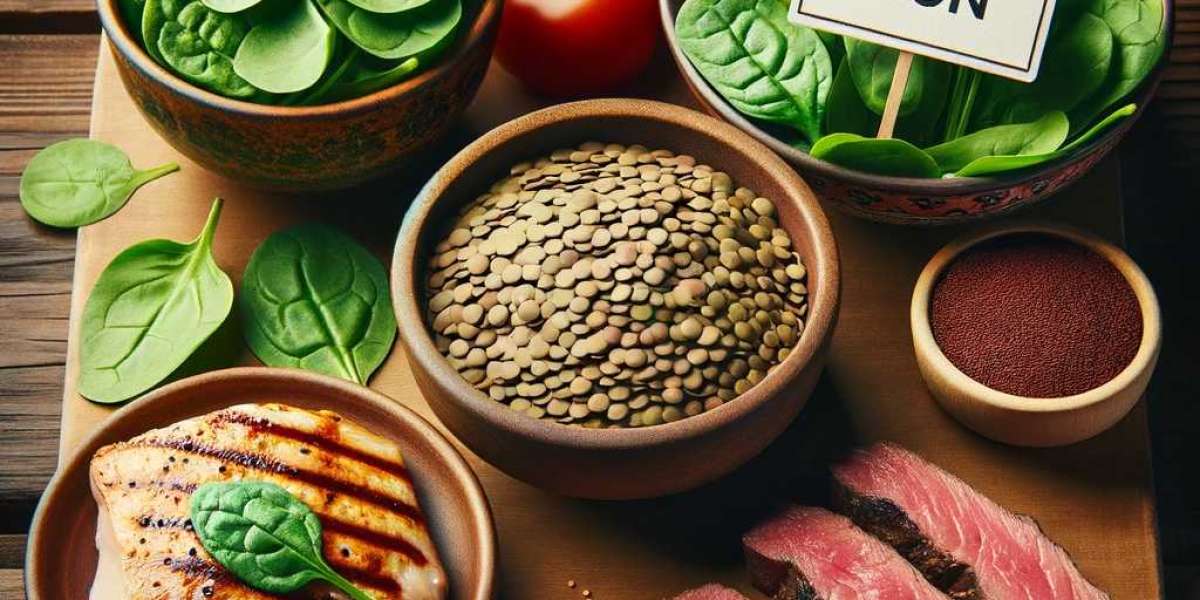The role of iron in red blood cells is nothing short of marvelous. Red blood cells, also known as erythrocytes, are the most abundant type of blood cell in the human body. Their primary function is to transport oxygen from the lungs to every cell in the body, where oxygen is needed for essential processes. This remarkable function is made possible by the presence of hemoglobin, a protein found in red blood cells. Hemoglobin binds with oxygen, forming a complex that allows efficient oxygen transport throughout the circulatory system.
The Structure of Hemoglobin
Hemoglobin is a complex protein that consists of four polypeptide chains, each bound to a molecule of heme. Heme, in turn, contains an iron atom at its core. It is this iron atom that plays a pivotal role in the binding and release of oxygen.
The Binding of Oxygen
As we breathe, oxygen is inhaled into our lungs. Within the alveoli of the lungs, oxygen binds to the iron atoms within the heme groups of hemoglobin. This binding is not static; it's a reversible process. When oxygen concentrations are high, such as in the lungs, hemoglobin binds with oxygen efficiently. This allows red blood cells to become oxygen-rich, ready to deliver their cargo to cells throughout the body.
Oxygen Transport and Delivery
Once red blood cells are oxygen-loaded in the lungs, they travel through the circulatory system. As they pass through tiny capillaries, oxygen is released from hemoglobin and diffuses into surrounding tissues. This is possible due to the difference in oxygen concentration between the red blood cells and the surrounding tissues. In areas where cells are actively using oxygen, the concentration of oxygen is lower, prompting hemoglobin to release its oxygen cargo. This ensures that cells receive the oxygen they require for energy production and other vital functions.
Iron as the Oxygen Shuttle
Iron, in its role as part of the hemoglobin molecule, acts as an oxygen shuttle. It carries oxygen from the lungs, where oxygen is abundant, to the body's various tissues and organs. This delivery system is essential for maintaining the body's energy production, metabolism, and overall health.
The Release of Carbon Dioxide
In addition to transporting oxygen, red blood cells also play a crucial role in removing carbon dioxide, a waste product of metabolism. Carbon dioxide is transported in the bloodstream, primarily in the form of bicarbonate ions. Red blood cells help facilitate the conversion of carbon dioxide into bicarbonate ions, which can be transported to the lungs for removal from the body. In the lungs, the reverse reaction occurs, converting bicarbonate ions back into carbon dioxide, which is then exhaled when we breathe.
Iron and Oxygen Transport in Exercise
The role of iron in red blood cells and oxygen transport becomes even more critical during exercise. As physical activity increases, the body's oxygen demand rises to support the working muscles. Red blood cells must deliver oxygen more efficiently to meet this demand.
Regular exercise can lead to several beneficial adaptations:
- Increased red blood cell production: Regular physical activity can stimulate the body to produce more red blood cells. This increased red blood cell count provides a greater capacity to transport oxygen.
- Enhanced oxygen delivery: Exercise promotes improved oxygen delivery to muscles, allowing them to perform more effectively.
- Better oxygen utilization: With consistent exercise, the body becomes more efficient in utilizing oxygen. This is achieved through various mechanisms, including improved muscle capillarization and mitochondrial function.
The Link Between Iron and Athletic Performance
Maintaining optimal iron levels is critical for athletes. Iron deficiency, often referred to as anemia, can lead to fatigue, weakness, and a decrease in athletic performance. Athletes, especially those involved in endurance sports, are at a higher risk of developing iron deficiency due to several factors, including:
- Increased iron loss through sweat and gastrointestinal bleeding
- Dietary restrictions, such as vegetarian or vegan diets, that may provide less heme iron
- Inadequate iron absorption, which can occur in the presence of other dietary components
- Repeated impact of foot striking in activities like running, which can lead to hemolysis (the destruction of red blood cells) and iron loss
To mitigate these risks, athletes often focus on optimizing their iron intake and absorption, both through dietary choices and supplementation.
Dietary Sources of Iron
Iron can be found in two forms in foods: heme and non-heme iron. Heme iron, present in animal products like red meat, poultry, and fish, is more readily absorbed by the body. Non-heme iron, found in plant-based sources like beans, lentils, spinach, and fortified cereals, is less efficiently absorbed.
To increase dietary iron intake, athletes can include the following foods in their diets:
- Lean meats, especially beef and poultry
- Fatty fish like salmon
- Legumes such as beans and lentils
- Tofu and soy products
- Fortified cereals
- Leafy greens, including spinach and kale
Combining these iron-rich food supplements with vitamin C sources, such as citrus fruits, can enhance iron absorption.
Supplementation
In cases of diagnosed iron deficiency, athletes may consider iron supplementation under the guidance of a healthcare professional. It's essential to monitor iron levels and ensure that iron tablets is administered correctly to prevent excessive iron intake.
Conclusion
The role of iron in red blood cells and oxygen transport is fundamental to human health and athletic performance. Iron, as a crucial component of hemoglobin, acts as the oxygen shuttle, delivering life-sustaining oxygen to the body's tissues and organs. Understanding the importance of iron in exercise and maintaining optimal iron levels can significantly impact an athlete's overall performance and well-being.



